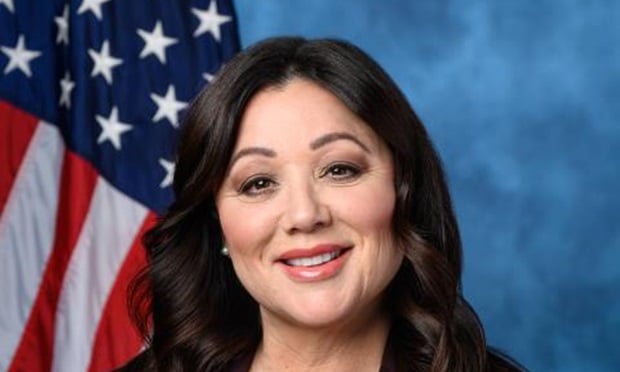The insurance market in 2016 was marked by chaos and uncertainty, and 2017 will probably be remembered in much the same way.
So why are brokers expressing optimism?
The main reason is that along with the chaos, there are promising new developments and evolving trends that suggest employers will be able to turn to brokers for education and innovation within the insurance market. Even with expected cost increases, brokers are expressing cautious optimism that there are emerging solutions to the challenges of health care and other employer-sponsored benefits.
Consolidation, the widespread adoption of voluntary benefits, new tools for transparency, and innovations like reference-based pricing are all part of a rapidly changing industry that is becoming more nimble in addressing challenges and better equipped to serve clients.
Change is good
Even if the last year has been a long, strange trip, many benefits experts say there is plenty of upside to the turmoil. “I think the market is going to remain chaotic, but I don't necessarily mean chaotic in a bad way,” says Bob Gearhart, Jr., a partner at DCW Group, based in Boardman, Ohio. “Any time there's change going on in a market, there's also tremendous opportunity.”
Brandon Scarborough, senior vice president at Cobbs Allen in Kansas City, Missouri, says the market is benefitting from both employers and consumers paying more attention to insurance in general, and better educating themselves on what will work for them. “They're moving past confusion to starting to be better consumers, to looking at alternative funding models, to being more innovative about the way they approach their health care benefits,” he says.
Curbing cost trends
According to a report by PwC's Health Research Institute (HRI), the 2018 medical cost trend is projected to be 6.5 percent, the first increase in growth in three years.
HRI's report notes that cost trends had fallen into single digits in the past 10 years. “Structural changes, such as the push toward paying for value, greater emphasis on care management and increased cost sharing with consumers, are taking a stronger hold, pulling back against rapid health care spending growth. Still, with medical cost trends hovering between 6 percent and 7 percent for several years, health spending continues to outpace the economy. Even the 'new normal' is not sustainable,” the report concludes.

Benefits experts are not surprised by the projections. “I'm hearing that medical costs are going up,” says Robert Shestack, chairman and CEO of the Voluntary Benefits Association, based in Palm Beach Gardens, Florida. “Premium increases are happening and I think they're going to get worse in the next year or two.” Shestack notes the rate of cost increases can vary, depending on whether a company is self-funded or fully funded, and adds that geographic location also plays a role.
Brokers and employers are looking at a number of strategies to address those rising costs. An ongoing switch to self-funded plans, aided by innovations such as reference-based pricing, is helping many companies. Holding down drug costs is another key focus, and value-based drug agreements are getting more notice. These agreements allow insurance plans to pay for drugs based on effectiveness.
According to Scarborough, brokers already have the necessary tools to help employers contain costs. “To me, the biggest myth in insurance is that health care costs cannot be contained,” he says. “The fact that this has become accepted in our industry is extremely frustrating. As advisors, it's our duty to show companies ways to control their health care spend. Anything less than that, and we're not doing our job.”
Voluntary still gaining steam
Although the growth of voluntary benefits is not new, signs are that even the holdouts are now coming onboard with the concept. According to Shestack, employers are increasingly seeing voluntary benefits as another way to recruit and retain workers in a tight job market.
“We're seeing a lot of critical illness, accident and hospital indemnity in voluntary benefits offerings, “ he says. “A lot of employers are focusing on financial wellness, work flexibility, paid time off, and other ways to become the employer of choice for millennials. There are also some plans that look at college refinancing or loan repayment.”
Gearhart said his company has found that voluntary benefits can help round out offerings for employees. “When deployed correctly, voluntary benefits are designed to enhance and customize a benefit plan in a way you couldn't necessarily do before,” he says.
Rudy Garcia, president and CEO of Qandun, based in Glendale, California, says his brokerage has also seen a recent uptick in companies' curiosity. “There's a new interest in voluntary benefits,” he says, “And employees are actually using these products on a regular basis. They're getting value out of them.”
However, benefits experts caution that a large voluntary benefits menu is no substitution for a good basic medical insurance plan. “It should not be a fallback for when medical costs have been mismanaged,” Shestack says.
Technology and the workforce
Gearhart says that even as technology opens new possibilities, there are still challenges about how to educate consumers—especially baby boomers. “The demographics have always been the same in the workplace; the difference now is that the technology that each subset has grown up with is just wildly different,” he says. “You have one subset in the workplace that never interacted with computers growing up or in their early years of employment, and another subset who prefers to do everything on smart phones.”
That wide gap in experience and expertise will continue to be a problem for employers, he adds. “You can put in all the programs you want, but if you can't effectively communicate it to the workforce, it doesn't matter.”
Gearhart adds that the most effective strategy is to have an “air traffic controller” approach—an independent service or application that can steer different employees to different solutions. “It needs to be someone who can who can direct the consumer to the right care at the right time at the right price. That's critical.”
The drive to transparency
“Transparency” is a word that is popping up more and more among insurance experts. The entire concept of high-deductible health plans (HDHPs), depends on consumers making informed decisions based on price and quality. Without transparency in those two areas—and there is often very little—consumers and employer-based plans have struggled to find true cost savings.
Recently, more transparency tools have come on line that provide better information on costs and quality. Reid Rasmussen, co-founder and CEO of FreshBenies, notes that companies like his can provide the kind of direction talked about above—guidance to consumers on how to find both price and quality information.
“You want price transparency and also quality transparency. Who gets good results? Who does a procedure more often?” Rasmussen says. “That allows real consumerism. When you're planning how much to put in your HSA this year, price transparency can really help.”
Garcia says brokers can show transparency on their fees as well, to help gain trust from their clients. He says brokers should be striving for “results-driven compensation.”
“We tell employers, 'if you go into a self-funded plan and give us the authority to manage it properly, we guarantee you that there's going to be a reduction in your costs the next year, and we are so confident that we are willing to put part of our compensation at risk—if you don't get your savings, we don't get our compensation.'”
Gearhart said his agency takes a similar approach. “We're tying our compensation from self-funded plans directly to the performance of our client's health care plan,” he says. “I feel like if the advisor sitting across the table from a client is confident their advice will work, why wouldn't they do it?”
According to Gearhart, the results-driven compensation approach is not widespread, but there are firms doing well with it. “It's sort of a different take on the health benefits space. There are a handful of brokers out there who are doing this; it's starting to gain traction.”
Stay calm and carry on
A focus on basic, practical concepts such as performance will likely be key to growth in the market in 2018. After all, the issues drawing the attention the media may or may not end up bringing real change.
Rasmussen notes that all the sound and fury around the ACA repeal in 2017 has come to nothing (so far.) “A year ago, we were all talking about how we were going to respond to the repeal of Obamacare; 12 months later, here we are, and they didn't get it done.”
Fortunately, there are many signs that brokers and other benefits professionals are increasingly ready to take matters into their own hands.
Complete your profile to continue reading and get FREE access to BenefitsPRO, part of your ALM digital membership.
Your access to unlimited BenefitsPRO content isn’t changing.
Once you are an ALM digital member, you’ll receive:
- Breaking benefits news and analysis, on-site and via our newsletters and custom alerts
- Educational webcasts, white papers, and ebooks from industry thought leaders
- Critical converage of the property casualty insurance and financial advisory markets on our other ALM sites, PropertyCasualty360 and ThinkAdvisor
Already have an account? Sign In Now
© 2025 ALM Global, LLC, All Rights Reserved. Request academic re-use from www.copyright.com. All other uses, submit a request to [email protected]. For more information visit Asset & Logo Licensing.








